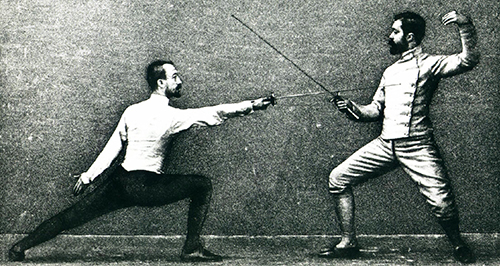Mind And Consciousness
It’s a peculiar part of being human that we have both a mind and consciousness but cannot tell them apart. The difference is that the mind is constantly in motion, producing sensations, thoughts, images, and feelings, while consciousness is the basic “stuff” of the mind, which remains unchanged no matter how active the mind is.
This inability to know the difference between mind and consciousness has created a trap that we all fall into. We create something from the “stuff” of consciousness and then forget that we created it. The trap becomes obvious with something like a dictatorship, when an ordinary human being becomes a figure of total belief and worship. From outside the ideology, you can see the deception – the very people who feel powerless before the dictator in fact created him and then felt powerless before him. But similar deceptions in everyday life escape our notice, and in that way, we trap ourselves.
Mind-created structures are everywhere, and when they become destructive, as in crime, war, us-versus-them thinking, religious conflict, and the technology that creates mechanized means of death, we struggle, often futilely, to correct them. The futility comes from not knowing how mind-created structures are made, and since the human world is entirely mind-created, the problem comes down to not knowing how our reality is made.
Babies are born without mental structures, although this can’t be a blanket statement, since the potential for complex mental activity is present already in a newborn. But even so, a baby looks at a shoe, a teacup, the walls of its room, and its own hand without naming or knowing what they are. Raw perception is a helpless state until the magic ingredient is added: interpretation.
Once perception and interpretation are joined, the next stage is to construct a story out of them. Here is where we acquired the enormous freedom to build a self, to give meaning to our lives and participate in the wide world. To take a single example, a piano makes sounds that are meaningless to a baby; then this perception is named as music. Now the perception of sound, interpreted as music, leads to the story of Mozart and the Beatles, with the freedom to either become a musician, enjoy music, ignore music, or have such a tin ear that music is meaningless. Every story can be untangled in the same way to get back to the basics of perception and interpretation.
But life tends to move in the opposite direction. We become more and more entangled in our stories, and in this tangle, we forget how stories are made and unmade. The trick is to stand outside all stories, which is the point of tracing them back to perception and interpretation.
If we become aware of how we’ve created our own stories (with the help of family and society), we can get out of messy entanglements. Going a step further, it’s possible to see where all mental activity comes from, something even more basic than perception. In the Indian tradition, the source of all mental activity is the play of consciousness. This play isn’t mental. Instead, being malleable, consciousness shapes itself at a much more basic level than sensations, images, feelings and thoughts.
Tags: Be Alert! In Your Own Right Infinite Creativity Mind And Consciousness The Choice










